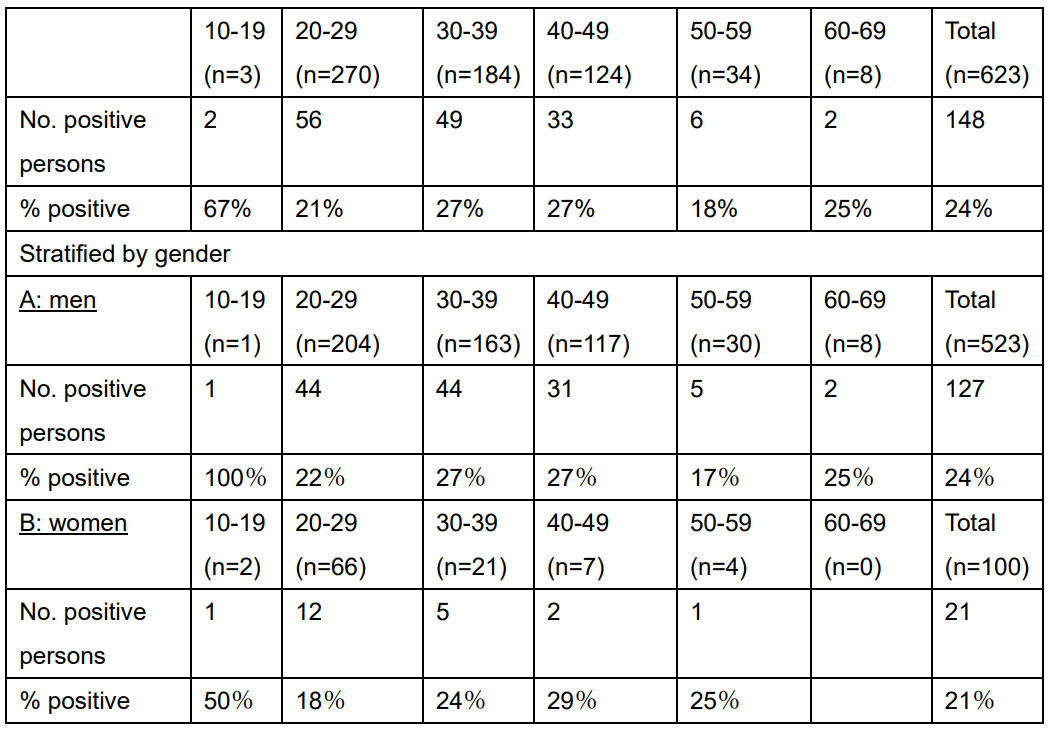<Rapid report>Outbreak of novel coronavirus disease (COVID-19) on a cruise ship docked in Nagasaki City: preliminary interim report
Posted date 2020/6/3
In this report, we describe an outbreak of novel coronavirus disease (COVID-19) that occurred on the cruise ship, “Costa Atlantica”, docked in Nagasaki City, Nagasaki Prefecture. This report provides information pertaining to the confirmation of a cluster of COVID-19 cases, the initial test results, and the early situation on the ship. Response activities are currently ongoing, and this report should be considered as preliminary and interim.
On 29 January 2020, the Italian cruise ship, “Costa Atlantica”, entered Nagasaki Port and docked inside the port on 20 February, remaining there until 25 March for ship repairs. Since then, given the enhanced quarantine measures implemented globally, departure became difficult and the ship continued to remain in Nagasaki Port. All persons on the ship were crew members, with 623 persons on board on 20 April 2020. Many were young male adults; 523 (84%) were men with a median age of 31 years (range: 19-69 years). The majority were of foreign nationality, with the Philippines, India, Indonesia, and China (listed in descending order) contributing the largest number of crew members.
In the early evening of 19 April 2020, the cruise ship contacted the Nagasaki City Public Health Center, noting that there were 4 febrile crew members, and that each of these members were separately isolated in a single room with a window. On 20 April, after performing PCR tests for novel coronavirus (SARS-CoV-2), 1 of the 4 members tested positive. Through 25 April, 57 febrile persons and their close contacts were tested, and, in order to screen for infection, 134 essential crew members (those whose services are considered to be essential on the ship) and the remaining 428 crew members were also tested. Among the 623 members on board, 148 (24%) tested positive. The proportion positive (the proportion of persons tested that were positive) was highest among the group of febrile persons and close contacts (33/57 (57%)); among essential crew members (27/134 (20%)) and the remaining members (87/428 (20%)), the proportion positive was both 20%.
The proportion positive was similar by gender (men: 24% and women: 21%). In addition, while 2 of the 3 crew members under 20 years of age were positive, the proportion positive was approximately 20% (range 18-27%) for the other age groups, regardless of gender (Table). The proportion positive was also similar across nationalities.
Based on these screening test results, as at 19 April 2020, it became clear that infection had spread inside the ship. While approximately 20% of the crew tested positive regardless of gender, age, or nationality, febrile persons and their close contacts had the highest proportion positive, at approximately 60%.
On 19 April, based on the direction of the ship’s management, all crew members were each assigned to a single room with a window, and except for essential crew members who had tested negative at screening, told not to leave the room. However, following the screening test results, it became apparent that rooms with test-positive members and test-negative members were interspersed throughout the same floor. Thus, in order to minimize the risk of transmission inside the ship, the response team on site provided training and guidance on infection prevention and the proper donning and removal of personal protective equipment for the essential crew members. Additional steps were implemented, such as the following: ensuring that essential crew members do not come in direct contact with those remaining in their rooms; streaming an educational video on COVID-19 infection prevention and control in the cabin rooms; disinfection of common areas shared by the essential crew members; and provision of materials necessary for infection prevention and control (e.g. gowns and alcohol disinfectants). As at 1 May, the following activities are ongoing: health monitoring of the crew members, establishment of the medical transport system, servicing the infection prevention and control infrastructure inside the ship, and coordination of disembarkation and return travel for the crew members.
References (in Japanese)
- Nagasaki Prefectural Government (latest situation on the novel coronavirus disease, site in Japanese). https://www.pref.nagasaki.jp/bunrui/hukushi-hoken/kansensho/corona_nagasaki/corona_nagasaki_shousai/
- Nagasaki City (latest situation on the novel coronavirus disease, site in Japanese). https://www.city.nagasaki.lg.jp/fukushi/450000/454000/p034301.html
Nagasaki City Public Health Center
Cruise Ship Local Response Team (Nagasaki University, National Institute of Infectious Diseases, National Center for Global Health and Medicine, Ministry of Health, Labour and Welfare Disaster Medical Assistance Team, and the Koyagi field response ambulatory team staff)
